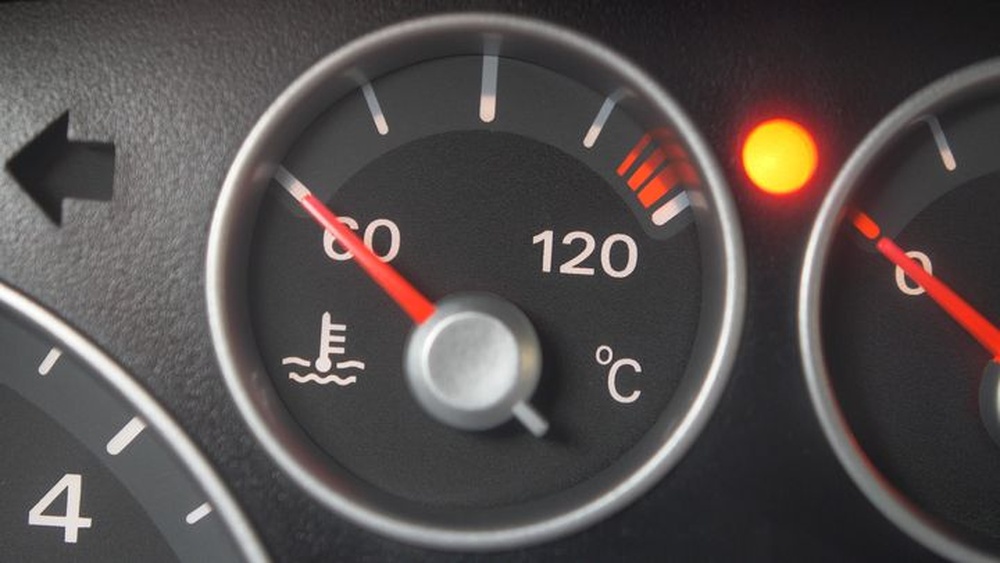You want your car to run smoothly and last a long time, right? One key factor that many drivers overlook is the oil temperature.
But where should your car’s oil temperature be to keep the engine safe and efficient? Knowing the right oil temp can help you avoid costly repairs and improve your car’s performance. You’ll discover the ideal oil temperature range for your vehicle and learn how to keep it in check.
Keep reading to protect your engine and drive with confidence!
Ideal Oil Temperature Range
Knowing the ideal oil temperature range helps keep your car engine safe. Engine oil works best within a certain temperature. Too cold, it won’t flow well. Too hot, it breaks down fast. Keeping oil in the right temperature range protects engine parts and improves performance.
Normal Operating Temperatures
Most car engines run with oil temperatures between 180°F and 220°F (82°C to 104°C). This range allows oil to flow smoothly and clean engine parts. At this temperature, oil lubricates and cools the engine efficiently. Temperatures above 250°F (121°C) can cause oil to lose strength and fail.
Factors Affecting Oil Temperature
Engine load, driving style, and outside weather change oil temperature. Hard driving or towing raises oil heat quickly. Cold weather keeps oil cooler and thicker. Engine design and oil type also impact oil temperature. Monitoring oil temperature helps avoid engine damage.

Credit: addinol.de
Effects Of Low Oil Temperature
Low oil temperature can cause several problems for your car’s engine. Oil needs to be warm to flow properly and protect engine parts. If the oil is too cold, it becomes thick and does not lubricate well. This leads to increased wear and poor engine performance. Understanding the effects of low oil temperature helps you keep your car running smoothly.
Increased Engine Wear
Cold oil does not flow easily between engine parts. This causes more friction and damage. Engine parts rub against each other without enough lubrication. Over time, this wear shortens the engine’s life. Parts like pistons and bearings suffer the most damage. Proper oil temperature keeps these parts safe.
Poor Fuel Efficiency
Thick, cold oil makes the engine work harder. The engine uses more fuel to overcome resistance from thick oil. This lowers your car’s fuel efficiency. Warm oil helps the engine run smoothly and saves fuel. Keeping oil at the right temperature improves mileage and saves money.
Risks Of High Oil Temperature
High oil temperature in a car can cause serious problems. Engine oil cools and protects the engine. If the oil gets too hot, it cannot do its job well. This can lead to damage and costly repairs. Understanding the risks helps keep your car safe and running smoothly.
Oil Breakdown And Degradation
Oil breaks down faster at high temperatures. It loses its thickness and protective qualities. Thin oil cannot protect engine parts from friction. Heat also causes oil to form sludge and deposits. This sludge blocks oil flow and damages the engine.
Potential Engine Damage
Hot oil causes engine parts to wear out quickly. Metal parts rub together without enough protection. This leads to overheating and part failure. Bearings, pistons, and cylinders are most at risk. Engine damage can result in expensive repairs or engine replacement.

Credit: www.reddit.com
How To Monitor Oil Temperature
Monitoring your car’s oil temperature helps protect the engine. Oil temperature shows how well the oil lubricates and cools the engine. Keeping an eye on this number prevents overheating and engine damage. There are simple ways to track oil temperature during drives. Use tools already in your car or add new ones for better accuracy.
Using Dashboard Gauges
Many cars have built-in oil temperature gauges. These gauges show the oil temperature in real time. Check your dashboard for a gauge labeled “Oil Temp” or a similar name. The needle moves as the engine warms up. Stay alert if the temperature goes above the normal range. Normal oil temperature usually ranges from 195°F to 220°F. If the gauge shows higher than this, slow down and let the engine cool.
Aftermarket Monitoring Tools
Aftermarket tools add extra oil temperature monitoring. These tools connect to your car’s engine or OBD-II port. They give more detailed and accurate readings. Some show digital numbers on a small screen or smartphone app. Others include alarms that sound when the oil gets too hot. Installing these tools is easy and helps catch problems early. This is useful for high-performance or older cars.
Maintaining Optimal Oil Temperature
Maintaining the right oil temperature is vital for your car’s health. Oil works best within a specific temperature range. Too hot or too cold oil can cause engine problems. Proper oil temperature keeps the engine parts moving smoothly. It also protects the engine from wear and tear. Regular care helps maintain this balance and extends your car’s life.
Regular Oil Changes
Changing oil on time keeps it clean and effective. Old oil loses its ability to cool the engine. Fresh oil flows better and maintains the right temperature. Follow your car’s manual for oil change intervals. Use the recommended oil type and grade. This practice supports stable oil temperature and engine health.
Cooling System Maintenance
The cooling system helps control engine temperature, including oil heat. Check the coolant level regularly and refill if low. Inspect hoses and the radiator for leaks or damage. A working thermostat ensures the engine warms up and cools down properly. Keeping the cooling system in good shape supports oil temperature balance.

Credit: www.youtube.com
Oil Temperature In Different Driving Conditions
Oil temperature changes with different driving conditions. It affects engine performance and oil life. Knowing the right oil temperature helps keep your car healthy.
City Driving Vs Highway
City driving often means stop-and-go traffic. Oil temperature tends to stay lower. The engine may not reach its ideal operating temperature. This can cause oil to be thicker and less effective.
On the highway, the engine runs steadily at higher speeds. Oil temperature rises and stays stable. It usually reaches between 195°F and 220°F (90°C to 105°C). This range helps oil flow smoothly and protect engine parts well.
Towing And Heavy Loads
Towing or carrying heavy loads puts extra stress on the engine. Oil temperature climbs higher than normal. It can go beyond 230°F (110°C). High oil temperature helps reduce engine friction.
Still, very high temperatures can break down the oil faster. Using oil with the right rating for heavy-duty work is important. This keeps the engine cool and running safely.
Frequently Asked Questions
What Is The Ideal Car Oil Temperature Range?
The ideal car oil temperature ranges from 195°F to 220°F. This ensures proper lubrication and engine performance. Temperatures below this may cause poor oil flow, while higher temperatures risk oil breakdown and engine damage.
How To Check Car Oil Temperature Accurately?
You can check car oil temperature using an OBD-II scanner or an oil temperature gauge. These tools provide real-time data, helping monitor engine health and prevent overheating issues. Regular checks ensure your engine runs within safe temperature limits.
Why Is Car Oil Temperature Important To Monitor?
Monitoring car oil temperature prevents engine wear and overheating. Proper oil temperature maintains viscosity, ensuring efficient lubrication. Overheated oil can cause engine parts to seize or wear prematurely, reducing engine lifespan and performance.
Can High Oil Temperature Damage My Engine?
Yes, high oil temperature can cause engine damage. Excess heat breaks down oil, reducing its lubricating ability. This leads to increased friction, wear, and potential engine failure. Keeping oil temperature within the recommended range is crucial.
Conclusion
Car oil temperature should stay within the normal range. Too low or too high can harm your engine. Check your car’s manual for the right temp. Watch the gauge often while driving. Fix any issues quickly to avoid costly repairs.
Keeping oil at the right temp helps your car run smooth. It saves money and keeps your engine safe. Simple steps can protect your vehicle for years. Stay aware and care for your car’s oil temp. It matters more than many drivers think.
Recent Posts
Spotting a mysterious puddle under your ride? Don't stress—we've uncovered the simplest, quickest fixes for those annoying car oil leaks right now!
Want your vehicle to feel smoother, stronger, and more reliable? Learn the simple secrets to the best oil change and give your car the high-performance tune-up it deserves.


